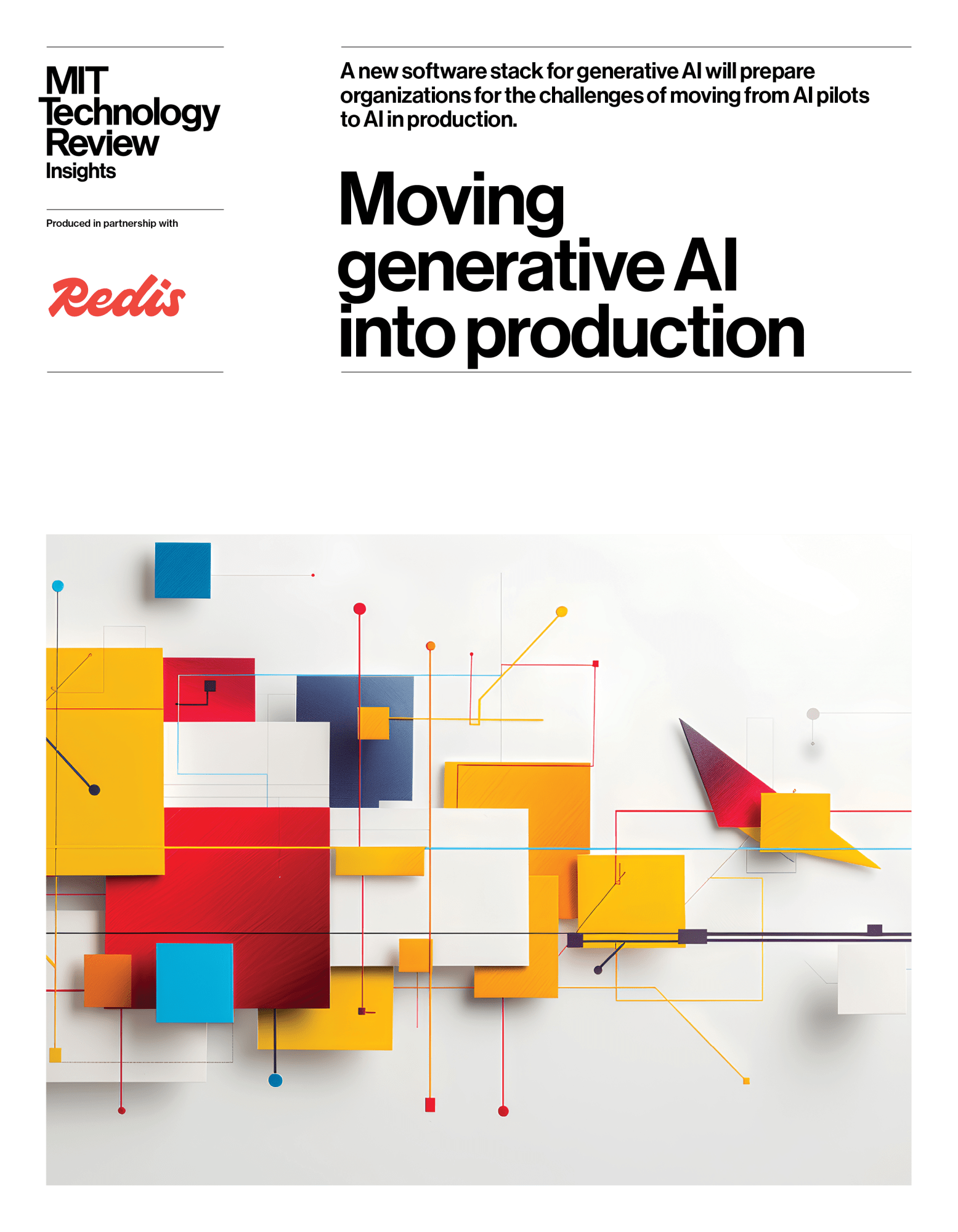Sponsored
Moving generative AI into production
A new software stack for generative AI will prepare organizations for the challenges of moving from AI pilots to AI in production.
In partnership withRedis
Generative AI has taken off. Since the introduction of ChatGPT in November 2022, businesses have flocked to large language models (LLMs) and generative AI models looking for solutions to their most complex and labor-intensive problems. The promise that customer service could be turned over to highly trained chat platforms that could recognize a customer’s problem and present user-friendly technical feedback, for example, or that companies could break down and analyze their troves of unstructured data, from videos to PDFs, has fueled massive enterprise interest in the technology.
This hype is moving into production. The share of businesses that use generative AI in at least one business function nearly doubled this year to 65%, according to McKinsey. The vast majority of organizations (91%) expect generative AI applications to increase their productivity, with IT, cybersecurity, marketing, customer service, and product development among the most impacted areas, according to Deloitte.
Yet, difficulty successfully deploying generative AI continues to hamper progress. Companies know that generative AI could transform their businesses—and that failing to adopt will leave them behind—but they are faced with hurdles during implementation. This leaves two-thirds of business leaders dissatisfied with progress on their AI deployments. And while, in Q3 2023, 79% of companies said they planned to deploy generative AI projects in the next year, only 5% reported having use cases in production in May 2024.

“We’re just at the beginning of figuring out how to productize AI deployment and make it cost effective,” says Rowan Trollope, CEO of Redis, a maker of real-time data platforms and AI accelerators. “The cost and complexity of implementing these systems is not straightforward.”
Estimates of the eventual GDP impact of generative AI range from just under $1 trillion to a staggering $4.4 trillion annually, with projected productivity impacts comparable to those of the Internet, robotic automation, and the steam engine. Yet, while the promise of accelerated revenue growth and cost reductions remains, the path to get to these goals is complex and often costly. Companies need to find ways to efficiently build and deploy AI projects with well-understood components at scale, says Trollope.
This content was produced by Insights, the custom content arm of MIT Technology Review. It was not written by MIT Technology Review’s editorial staff.
Deep Dive
Artificial intelligence
AI means the end of internet search as we’ve known it
Despite fewer clicks, copyright fights, and sometimes iffy answers, AI could unlock new ways to summon all the world’s knowledge.
How a top Chinese AI model overcame US sanctions
With a new reasoning model that matches the performance of ChatGPT o1, DeepSeek managed to turn restrictions into innovation.
The second wave of AI coding is here
A string of startups are racing to build models that can produce better and better software. They claim it’s the shortest path to AGI.
What’s next for AI in 2025
You already know that agents and small language models are the next big things. Here are five other hot trends you should watch out for this year.
Stay connected
Get the latest updates from
MIT Technology Review
Discover special offers, top stories, upcoming events, and more.
